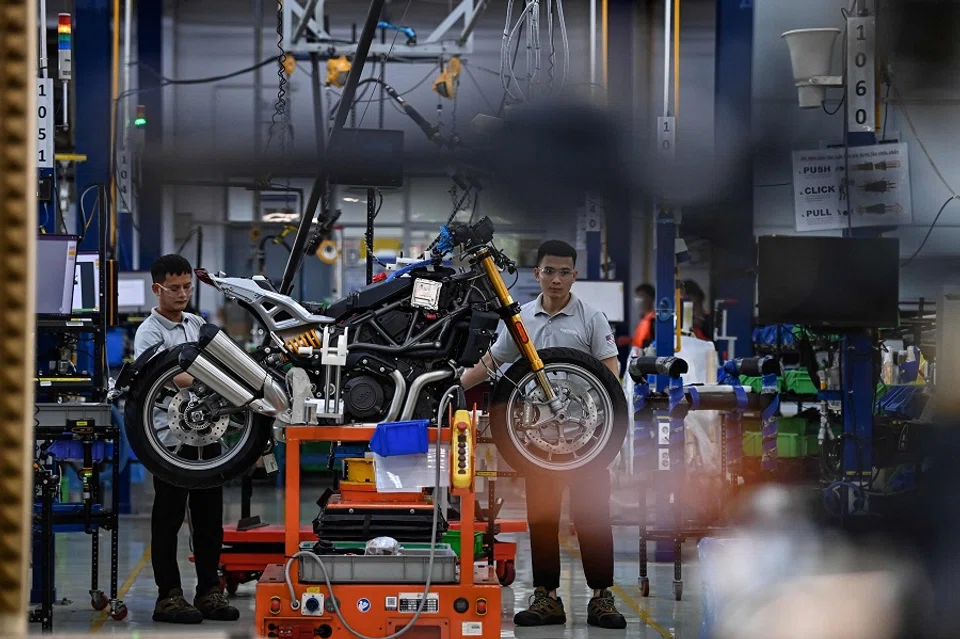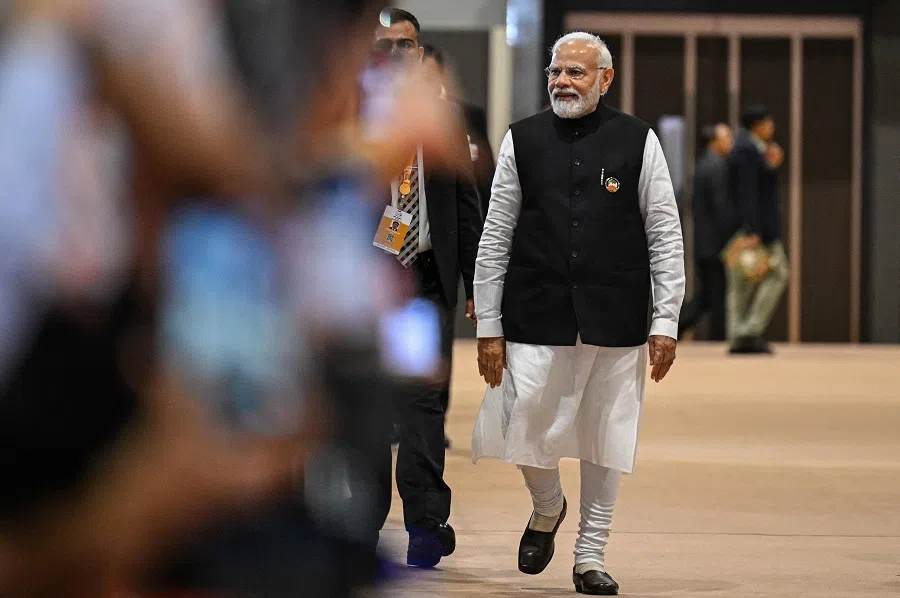The global south's rare development opportunity as big countries de-risk
EAI academic Chen Gang notes that although the Chinese authorities are against the Western notion of "de-risking", it has itself taken steps to de-risk, with ASEAN overtaking Europe and the US as China's largest trade partner. As major countries are gaining ground in their de-risking strategies, the global south is set to benefit.

This year, leaders from Europe and the US have increasingly replaced the term "decoupling" with "de-risking", signalling that economic and trade relations with China are so intertwined that it is impossible to "decouple and break the chain" entirely. Hence, they are forced to look elsewhere to fulfil parts of the supply chain as well as diversify their trade and investments in order to mitigate risks.
Diversification is the trend of the future
Though Chinese authorities are clearly against the Western notion of de-risking, it itself has taken steps to de-risk by reducing its reliance on investment, skills and market demand from the West, in the interest of national security and geostrategic concerns.
Under such a de-risking trend undertaken by the big countries, the bulk of their investment, human resources and technical expertise would flow towards the global south and benefit developing countries.
In the last two decades after China became a member of the World Trade Organization, the centre of global industrial and supply chains rapidly moved east, with China becoming the world's factory. China supplied parts, conducted assembly and exported end products for several industries, with the European and US markets having the biggest demand for such goods. The US dollar and euro were important currencies facilitating these transactions.
The pandemic and rising geopolitical tensions have caused many to realise that it would be difficult to continue with such an arrangement for the global economy. On the one hand, production costs in China keep rising, and the government has also stepped up requirements for environmental protection, security and corporate social responsibility.
If the US dollar remains the top currency in the long term, this would affect China's financial strength on the global stage. Thus, China's expansion in the global south markets must be done in tandem with reforms to the international finance system...

On the other hand, the Russia-Ukraine war and geopolitical tensions have highlighted the danger of industrial over-reliance on a country. Indeed, Western companies with heavy investments in Russia suffered great losses in the short term with the sudden outbreak of the Russia-Ukraine war.
Looking to the south
China's over-reliance on Western demand is also changing. After announcing the Belt and Road Initiative (BRI) in 2013, trade volumes with countries along the BRI - most of which are developing countries - have progressively increased.
The Association of Southeast Asian Nations (ASEAN) has replaced both Europe and the US as China's largest trade partner, and China's trade and investments with other BRICS nations have increased rapidly as well. Meanwhile, the Russia-Ukraine war has caused a spike in Chinese exports to Russia; statistics show that in the first seven months of this year, Chinese exports to Russia rose by 70% even as overall exports fell by 5%.
Since the West brought up "decoupling", China has proactively sought to de-risk, lowering reliance on Western markets by boosting domestic demand and expanding its exports to emerging markets.
Compared with the developed markets such as Europe and the US, the global south markets lack hard currencies such as the US dollar and the euro, as well as spending power. Hence, China has bilateral currency exchange agreements with an increasing number of countries, allowing them to trade using their own currencies.
But an increase in such trades might result in a weakened US dollar influx and US dollar reserves for China. If the US dollar remains the top currency in the long term, this would affect China's financial strength on the global stage. Thus, China's expansion in the global south markets must be done in tandem with reforms to the international finance system, and the tussle between China and the US for pole position vis-a-vis the US dollar would persist.

The West and other big countries are also looking to strengthen trade relations with the global south. The slowdown in China's economic and population growth has led many to conclude that there is a limit to the Chinese market demand. In comparison, the collective markets of the global south far outstrip that of China. India's population is expected to surpass China's this year, while Nigeria, one of the largest countries in Africa, is expected to exceed China in population in this century, occupying the second spot globally.
Indeed, the issue of an ageing population is less severe for countries in the south when compared with that of the countries in the north. With warm weather and ample natural resources, it is easy to win the favour of developed countries.
...while there is the prospect of a ripe opportunity for the global south, the key to seizing it is having its people ready to do so.
Is the global south ready?
Thus, with big countries in the north fervently de-risking, the global south is presented with a rare development opportunity. Global production and supply chains have set up new grounds in countries in the south. Meanwhile, the Russia-Ukraine war and climate change have kept the prices of natural resources and agricultural products elevated, presenting tailwinds for developing countries that export their resources.
The big countries have set forth their strategies with regard to the global south: China continues to promote the BRI, while the US and Japan are in the thick of implementing their respective Indo-Pacific strategies. India views itself as a key member of the global south; in its leadership role at the recent G20 summit, India announced the India-Middle East-Europe Economic Corridor (IMEC), which garnered strong support from the US.
Although competition among big countries cannot be avoided, these projects and initiatives would objectively bring large investments and employment opportunities to developing countries, thus improving local infrastructure and spurring economic development in the process. And while there is the prospect of a ripe opportunity for the global south, the key to seizing it is having its people ready to do so.

There are numerous countries in the global south, and most are not economically developed. Several of these nations are relatively weak, with little bargaining power when dealing with big countries. To have successful interactions with foreign nations, these countries must form alliances and work on strengthening their own governance, as well as leverage the platform of regional organisations to participate in projects with big countries. This would help developing countries rise to more favourable positions internationally.
The big countries' policy of mutual de-risking and plans for developing the south are two major strategies that go hand-in-hand - like two sides of the same coin.
Associations such as ASEAN, the African Union and the Gulf Cooperation Union are successful models that will continue to foster cooperation and coordinate the interests of member countries. The African Union was recently confirmed as a permanent member of the G20, signalling the importance of the African continent in the global economy. ASEAN could follow in the footsteps of the African Union in joining the G20 in the future, in turn strengthening the voice of Southeast Asian countries in global governance.
The big countries' policy of mutual de-risking and plans for developing the south are two major strategies that go hand-in-hand - like two sides of the same coin. In other words, economic globalisation has not ended, and it shall continue to bring benefits to more regions and more people around the globe.
This article was first published in Lianhe Zaobao as "大国间互去风险有利于全球南方".





![[Big read] China’s 10 trillion RMB debt clean-up falls short](https://cassette.sphdigital.com.sg/image/thinkchina/d08cfc72b13782693c25f2fcbf886fa7673723efca260881e7086211b082e66c)